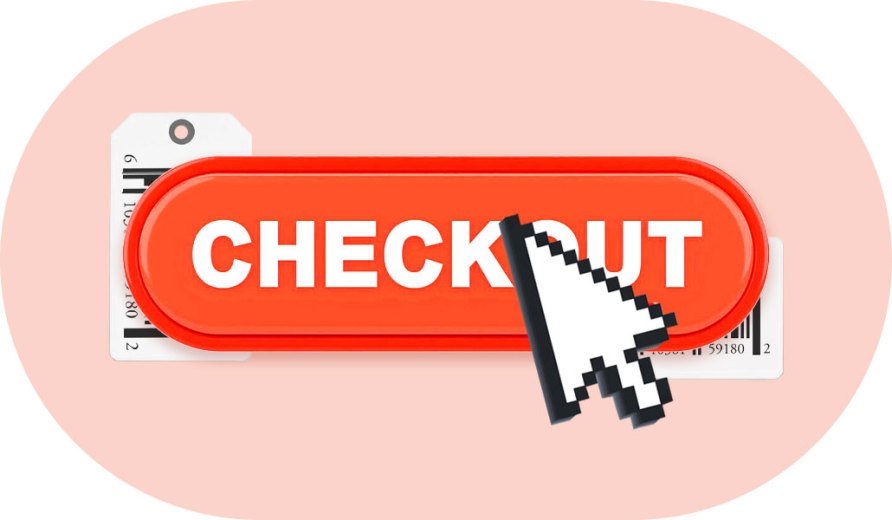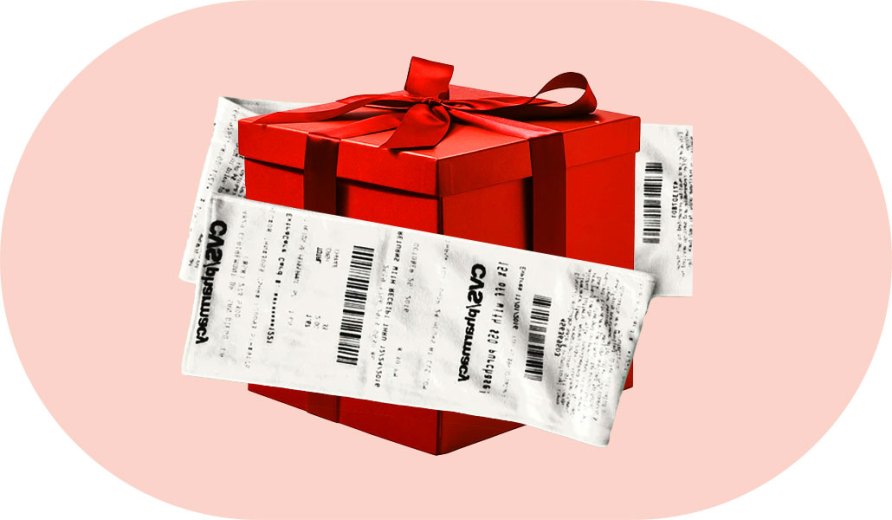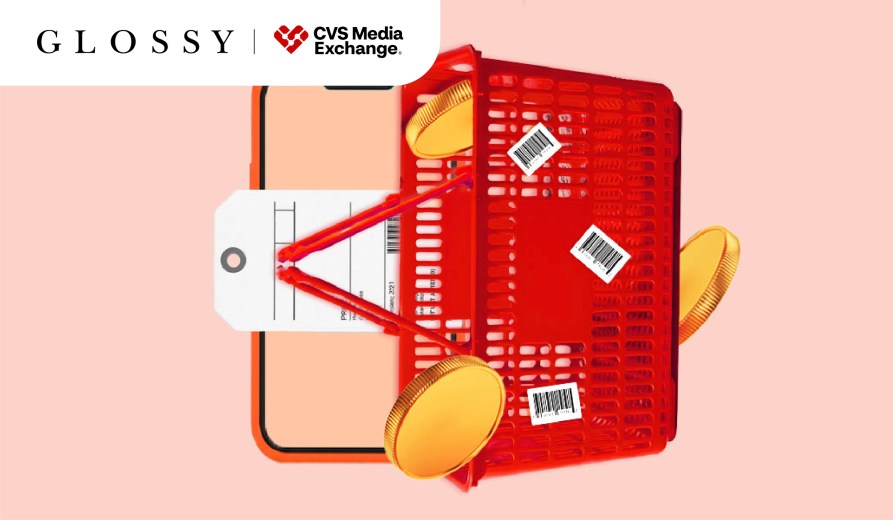This State of the Industry report, sponsored by CVS Media Exchange, explores how brands, agencies and retailers are integrating retail media, social media, streaming and in-store activations to build full-funnel strategies that deliver results.
As beauty, fashion and wellness brands navigate a more fragmented consumer landscape, full-funnel marketing has become essential for driving both brand awareness and conversion. The most effective marketers are blending upper-funnel storytelling with precision performance tactics, balancing long-term brand building with short-term sales goals.
For this new State of the Industry report, Glossy and CVS Media Exchange (CMX) polled more than 90 agency, brand and retailer respondents to learn how advertisers are refining their media mixes. Respondents represented a variety of sectors, including beauty (both mass-market and prestige/luxury), non-pharmaceutical health and wellness, grocery and other CPG categories.
Effectively integrating social, search, retail media and even in-store activations is essential for marketers to ensure their messages reach and engage the right audiences — all while staying ahead of the changing shopper landscape. Among respondents, 81% are seeing more fragmented consumer journeys. More than 7 in 10 are also navigating the growth of social commerce (76%) and more comparison or review-based shopping (71%), while 63% are facing rising price sensitivity among shoppers.
In this report, we explore how marketers — especially in beauty and wellness — are tackling these rapid shifts in shopper behavior with full-funnel strategies. In today’s fragmented marketing environment, teams can no longer afford to silo their media strategies.
“In today’s consumer landscape, it’s really all about meeting shoppers where they are — offering personalized recommendations that align with their interests and everyday routines,” said Kristen DiCorleto, head of marketing at CMX. “So when brands consider their media mix, they should think about reaching customers at every point of their shopping journey. For example, today’s customers are increasingly utilizing digital platforms like social media for shopping, and their purchasing decisions are heavily influenced by trusted reviews.
“Overall, personalization is reshaping expectations, with shoppers gravitating toward experiences that feel both local and personal,” she said. “Delivering relevance and trust through 1:1 interactions, from personalized digital offers to contextual in-store media, ensures shoppers feel supported throughout their path to purchase.”

Marketers’ toolkits are increasingly expansive, reflecting the growing fragmentation of the media landscape.
Nearly all respondents (96%) are using social media as a marketing channel, followed by display advertising (82%), owned email marketing (82%) and retail media networks (79%). Two-thirds (66%) are investing in AVOD/streaming ads, while less than one-quarter use SMS/push alerts (22%) or out-of-home marketing (16%).
Among beauty (both mass-market and prestige) and wellness respondents, all channels have higher rates of adoption, except for OOH. Most significantly, 87% of beauty and wellness respondents use RMNs (up from 79%) and 73% use AVOD/streaming ads (up from 66%).
Regardless of the sector, it’s clear that advertisers are leaning into the channels at their disposal in their pursuit of revenue.
When asked what the preferred marketing channel is for driving sales, social media (31%) edges out RMNs (30%) among all respondents. However, beauty and wellness respondents are evenly divided between social media (30%) and RMNs (30%) as the preferred sales driver.
Despite their ubiquity in the marketing mix, less than 10% of respondents named owned email marketing (9%) or display advertising (7%) as their preferred channel for sales.
And while many high-end beauty brands were once hesitant to join platforms like Instagram out of fear of brand diminishment, their marketing tactics are seemingly converging with their mass-market counterparts.
For instance, more mass-market beauty brands (94%) use retail media networks than prestige or luxury beauty brands (80%). However, more high-end beauty brands than mass-market beauty brands prefer RMNs for driving sales (35% to 28%, respectively). Streaming/AVOD was the leading channel for sales among mass-market beauty brands (37%), while retail media networks tied with social media (35%) among prestige and luxury labels.
Ultimately, it seems that players in the prestige and luxury beauty space aren’t seeing an advantage in staying out of more accessible channels. Instead, these high-end brands are turning to channels like retail media and streaming that offer actionable insights to further refine and optimize their full-funnel efforts.
“In beauty, social media has long been the powerhouse where discovery thrives through tutorials, influencer recommendations and cultural trends,” DiCorleto said. “While social is a strong channel within the retail media ecosystem, retail media as a whole has also become an essential growth engine for beauty brands with its ability to connect consumers to products like never before through targeted and personalized reach — both in-store and digitally.
“What began as a lower-funnel, performance-driven tactic has evolved into a full-funnel, omnichannel strategy that blends inspiration, education and conversion all in one place. At CMX, we’re also able to leverage closed-loop attribution on channels like Pinterest and Reddit, measuring impact across the entire consumer journey.”
As RMNs continue to mature, advertisers have embraced a hybrid approach to retail media. This underscores the importance of engaging relevant audiences outside of their usual categories.
“Unlike other channels, retail media networks give advertisers access to real shopping behaviors — what customers actually buy, when and where — allowing campaigns to be targeted with accuracy,” DiCorleto said. “Because retail media networks operate within a retailer’s ecosystem, advertisers can see the direct impact of their campaigns on sales, from incremental lift to new-to-brand buyers. This level of insight goes beyond impressions or clicks — it’s about real business outcomes.”
Among respondents whose preferred channel is retail media, 92% are advertising on an even mix of endemic and non-endemic retail platforms. Eight percent primarily advertise on retail platforms that sell their product.
Advertisers are also taking advantage of retail media’s diverse offerings and using a variety of ad formats, including video ads (92%) and social media ads facilitated by the retailer (89%). Nearly two-thirds (65%) are using in-store digital ads, underscoring the importance of reaching shoppers close to the point of purchase.
For instance, CMX recently executed a campaign for a well-known beauty and wellness brand across various ad formats, including video, social media and in-store digital trendcaps.
“The campaign reached more than 5 million daily in-store interactions, 35.2 million digital impressions and fueled a $12 increase in in-store ROAS, bringing the brand’s equity to life right at the shelf — where CVS already leads the market in beauty care spend per trip,” DiCorleto said. “Through emotionally resonant creative, data-driven precision and omnichannel reach, we helped the brand’s message of authentic beauty connect with consumers in meaningful ways.”
As brands, agencies and retailers diversify their media mixes, the KPIs they prioritize reveal how each channel is most effectively used across the funnel.
For instance, among the respondents using social media, 41% named conversions as their main KPI, followed by engagement (33%). Impressions are the top metric for display advertising (56%) as well as OOH (55%). On the other hand, clicks are the top metric for owned email marketing (72%) and SMS/push alerts (56%).
Three-quarters of retail media users cited incrementality as their main KPI, well ahead of conversions (12%) and return on ad spend (10%). As Digiday reported, there is growing interest in measuring incrementality, particularly regarding retail media. What incrementality attempts to measure is whether a sale happened because of a certain retail media spend or advertisement — or whether a sale would have occurred even if the brand didn’t spend on retail media.
To an extent, respondents’ measurement approaches reflect each channel’s strengths throughout the funnel — from awareness through consideration to purchase. However, as channels continue to evolve and mature, marketers will need to continue experimenting with how to best fuel brand discovery and sales — and individual platforms have their own nuances as well. For instance, as discussed in one Glossy focus group, some brands may use TikTok to drive awareness, while others use Instagram as a “brand billboard” and see TikTok as a successful sales driver.
“From a marketing mix perspective, the most effective programs integrate both top-of-funnel and bottom-of-funnel efforts,” DiCorleto said. “Strategies are no longer siloed by brand versus trade spend. Instead, we’re seeing a more unified approach where awareness and conversion work hand in hand within the retail ecosystem.”

Social media, which is optimized for both conversion and engagement, has a significant impact throughout the funnel, as respondents find the channel is best-suited for middle-funnel (56%) and top-funnel (28%) activations. It’s worth noting that outside of social commerce, like TikTok Shop, brands are also pushing social media users to other sites — such as a retailer site or their own e-commerce site — to complete purchases.
Similarly, SMS and push alerts are used throughout the funnel, but are considered most effective for top-funnel (38%) and bottom-funnel (31%) uses. Interestingly, this channel is effective for targeting new customers to increase awareness or push customers to check out. The top funnel is likely to include strategies such as welcome discounts, and the bottom funnel is focused on cart abandonment to get customers to resume checkout. OOH (80%) and owned email marketing (66%) lead all channels as most effective for top-funnel activations.
Notably, 92% of RMN advertisers find the channel — which is primarily evaluated by incrementality — is most effective post-funnel. Post-funnel refers to marketing and customer experience activations that occur after a purchase — such as post-purchase communication, customer support and rewards programs — to re-engage shoppers and build brand loyalty.
“Incrementality is one of the most critical measures of success in retail media because it helps brands understand the true impact of their marketing efforts,” DiCorleto said. “Rather than simply tracking impressions or clicks, incrementality reveals whether a campaign actually drove additional sales, attracted new-to-brand buyers or re-engaged lapsed customers — outcomes that matter most to brand growth and loyalty.
“Advertisers don’t just want to know how many shoppers saw an ad; they want to understand what changed because of it,” she continued. “When brands can clearly see the incremental value retail media drives, they can confidently invest more and build deeper loyalty over time.”
Data, particularly first-party data, is essential for targeting and personalizing campaigns to drive impactful results.
Eighty-one percent of respondents ranked first-party data, which is information collected directly from a customer, as the most valuable data type for their marketing strategy. More than half of respondents (54%) ranked third-party data, which is collected through third-party cookies or other identifiers that track users, as the least valuable to their marketing efforts. Zero-party data, or information a shopper intentionally shares with an advertiser, landed in the middle of the spectrum.
Zero, first- and third-party data encompasses a range of information, some of which is more helpful than others when it comes to fueling marketing efforts. More than half (52%) of respondents find purchase history to be most important for their company’s marketing strategy. This is followed by online/browsing history (28%) and contact information (17%).
Notably, purchase history and browsing history can be either first- or third-party data, depending on source and context. And as the third-party data diminishes in value amid the shift toward consumer privacy, accessing these insights through trusted, authenticated first-party sources gives advertisers a competitive edge.
As reported by Glossy, beauty and personal care brands have also positioned rewards programs as a means of gathering and encouraging first-party data sharing, particularly in a post-cookie landscape.
These dynamics help RMNs stand out, since retailers can provide purchase and browsing data that is directly tied to loyalty members as well as in-store and online shoppers — giving brands a more accurate and privacy-safe way to target and measure performance.

“Loyalty programs give retailers an unmatched view into the shopping journey of their customers,” said DiCorleto. “At CMX, our advantage isn’t just the scale of our more than 90 million addressable ExtraCare members and first-party front-store data; it’s the precision with which we leverage these tools.”
Indeed, targeting and measurement are the top data uses among respondents.
To support marketing strategies, 83% of all respondents use data for audience targeting and segmentation, and 77% use data for attribution and measurement. More than half apply data to onsite and offsite advertising/retargeting (55%) and personalization and dynamic creative (53%). However, among beauty and wellness respondents, attribution and measurement (83%) take a slight priority over targeting and segmentation (82%).
“To get the most from retail media, advertisers should prioritize contextual engagement beyond just transactional targeting,” DiCorleto said. “This helps them understand not just what consumers buy, but the motivations behind those choices with messaging that resonates. Measuring performance at the transaction level is also key, allowing brands visibility into what’s working, driving both confidence and smarter optimization. By integrating these insights, brands can optimize spend, prove ROI and continuously refine campaigns for higher engagement and conversion.”
For example, the semi-annual CVS Epic Beauty Sale aims to capture demand at a time when ExtraCare data shows shoppers are motivated by seasonal changes to refresh their beauty and personal care routines. In the spring, brands saw enhanced exposure through additional in-store placements. On the CVS website and mobile app, deterministic ExtraCare member audiences were targeted based on purchase behavior across brands, categories and subcategories, with a focus on active, high-value, prospective and lapsed buyers.
“By pairing our precision media targeting with the reach of front-store marketing, we’re able to drive measurable growth in awareness, new customer acquisition and sales lift year after year,” DiCorleto said. “Our recent spring event activated across onsite display ads, standard and premium offsite display ads and social, resulting in an $11.37 average ROAS.”
Given the importance of data, any issues with deploying customer information can pose challenges for marketers across channels.
Most commonly, respondents point to issues with data quality (71%). Other significant obstacles include data integration with owned-and-operated systems (47%) and transparency from third-party platforms (29%).
Not all channels are equal in what they offer brands, agencies and retailers in terms of data quality, accessibility and transparency, however.
When asked which marketing channel has the best visibility of data metrics, 62% named owned email marketing. This underscores the transparent nature of the channel, in which metrics aren’t hidden in a black box or walled garden. Another 16% of respondents named social media as the channel with the most visibility into data, followed by 10% who credited RMNs.
As reported by Digiday, transparency and measurement standardization are areas of concern among advertisers spending on retail media.
To address these points, CMX has been building momentum around its measurement and attribution capabilities, including improvements that align with the Interactive Advertising Bureau/Media Rating Council retail media measurement standards.
“Providing a level of transparency around measurement and the way in which we are delivering that back to our advertisers — so we create a transparent playing field for our retail media networks — that’s what’s going to continue to help grow the industry,” Parbinder Dhariwal, vp and general manager at CVS Media Exchange, said in a 2024 interview with Digiday.
Challenges with measurement and attribution — regardless of channel — point to the leading roadblock impacting full-funnel marketing strategies. Eighty-eight percent of respondents named difficulty proving ROAS or ROI as a current challenge. Marketers are also navigating data privacy/regulatory concerns (72%) and ad fraud/viewability issues (69%).
While brands are cutting back their spending, only 27% of respondents cited a lack of budget or the cost of media as challenges impacting their full-funnel marketing. In today’s uncertain and fast-paced economic climate, Glossy reports that brands are also streamlining operations, modifying ordering and fulfilling strategies and downsizing office space to maintain flexibility with budgets and pricing.
“In an industry where performance can often feel opaque, transparency and innovative measurement products empower smarter decisions and stronger ROI,” DiCorleto said. “This means visibility into how retail media campaigns are executed and measurable proof of impact — not just modeled or estimated results, but real, actionable outcomes. Tools like real-time performance dashboards that break down results by line item, channel, audience, new versus existing buyers and even SKU can set a new standard for transparent reporting. This clarity will empower more informed decisions, foster greater trust between brands and platforms and, ultimately, drive more effective campaigns.”
While shifting shopper behaviors and rising price sensitivity require brands — particularly in the beauty and wellness space — to be nimble, there are exciting opportunities throughout the funnel, from social media and streaming to retail media.
Looking ahead to 2026, the winners will be those who keep pace with changing consumer expectations and seamlessly integrate channels, leaning into a full-funnel mix that balances awareness, engagement, conversion and — increasingly — post-purchase loyalty. Customer data, particularly purchase and browsing history, further empowers advertisers with the essential insights to personalize messaging and prove ROI across channels (though measurement continues to be a sticking point).
“Fueled by retail media networks — which are quickly becoming a cornerstone for the advertising ecosystem — marketers will shift their focus toward measurable performance and strategic partnerships,” DiCorleto said. “Transparency will become a foundational principle as advertisers demand clear insights into campaign performance, data collection methods and ROI attribution. Across all sectors, the future belongs to those who use data not just to reach consumers, but to understand them — turning every media moment into an opportunity for connection, co-creation and lasting brand relevance.”
Sponsored by CVS Media Exchange





